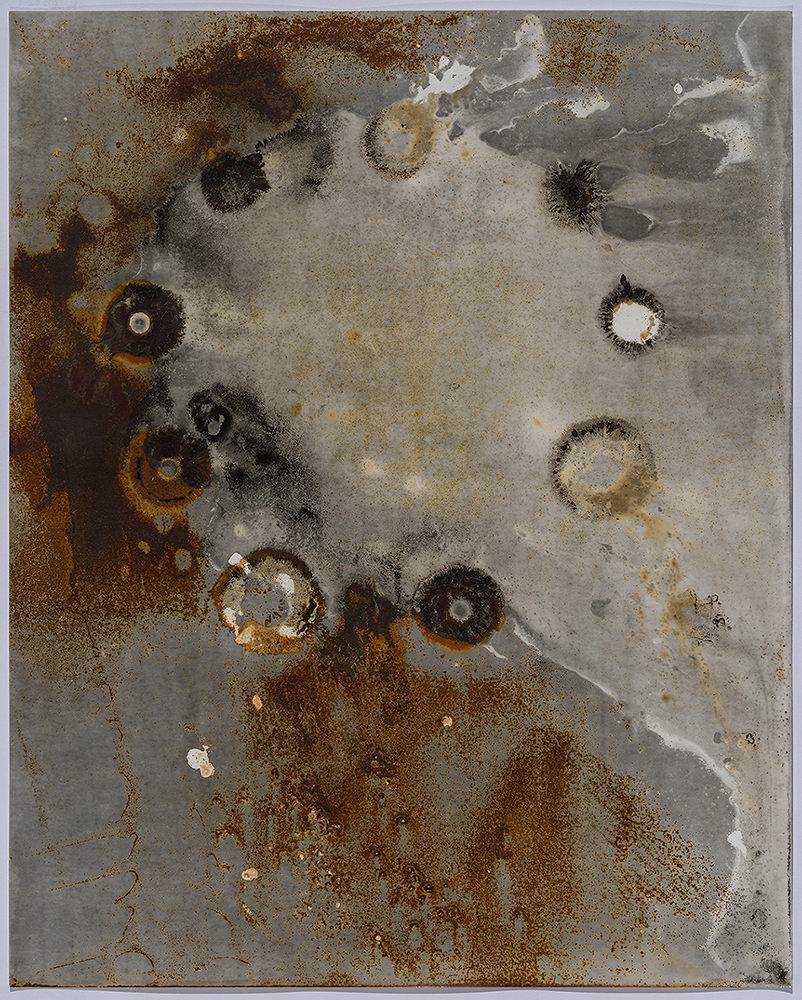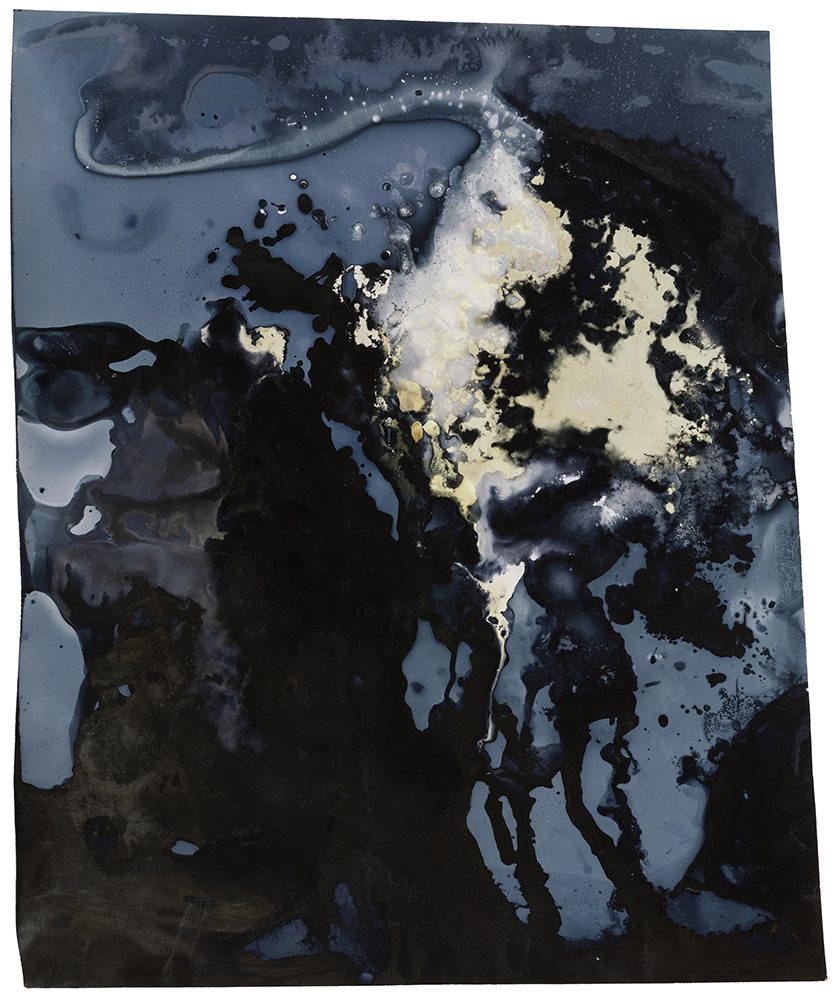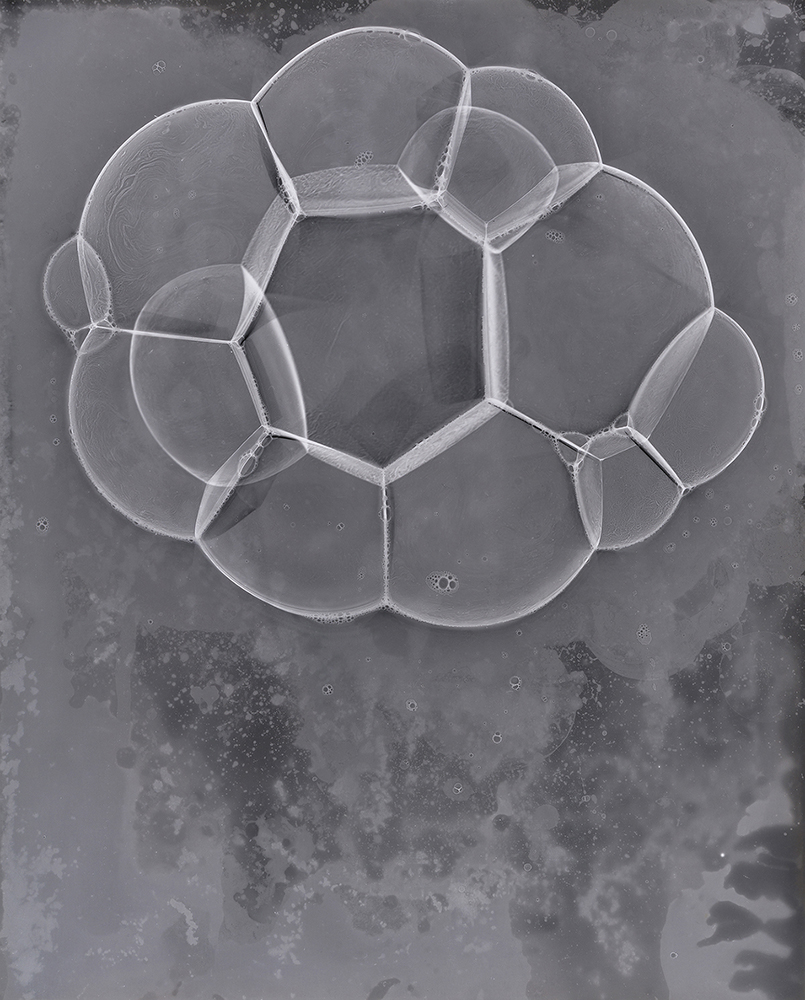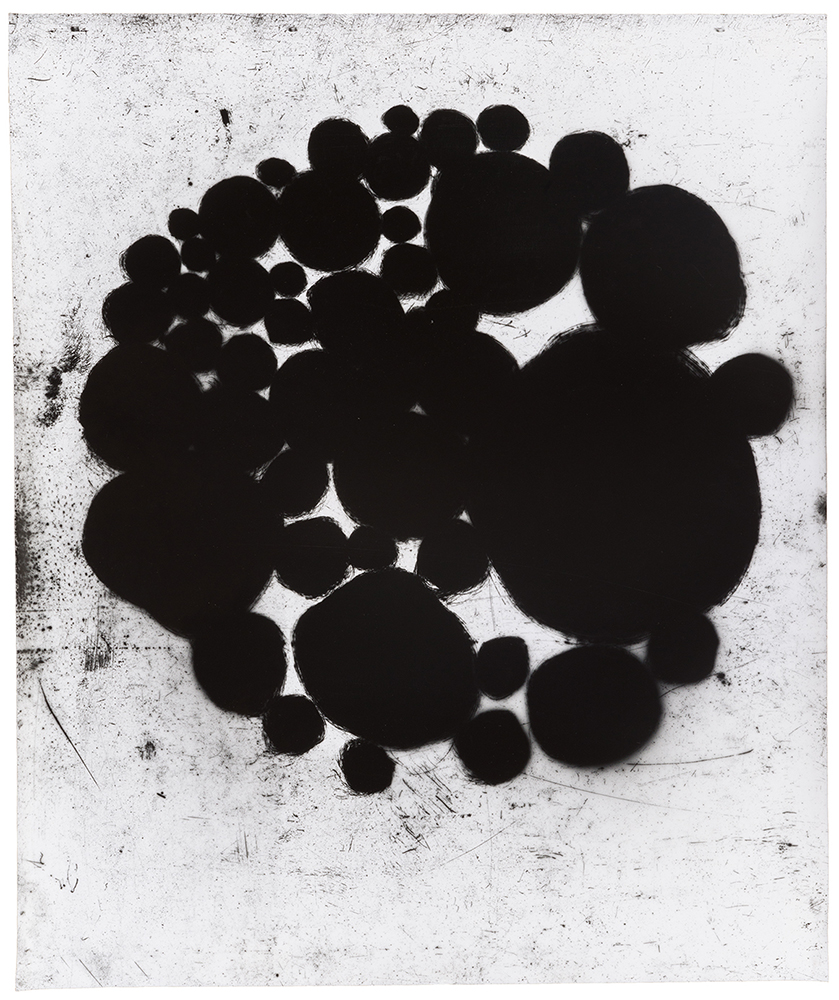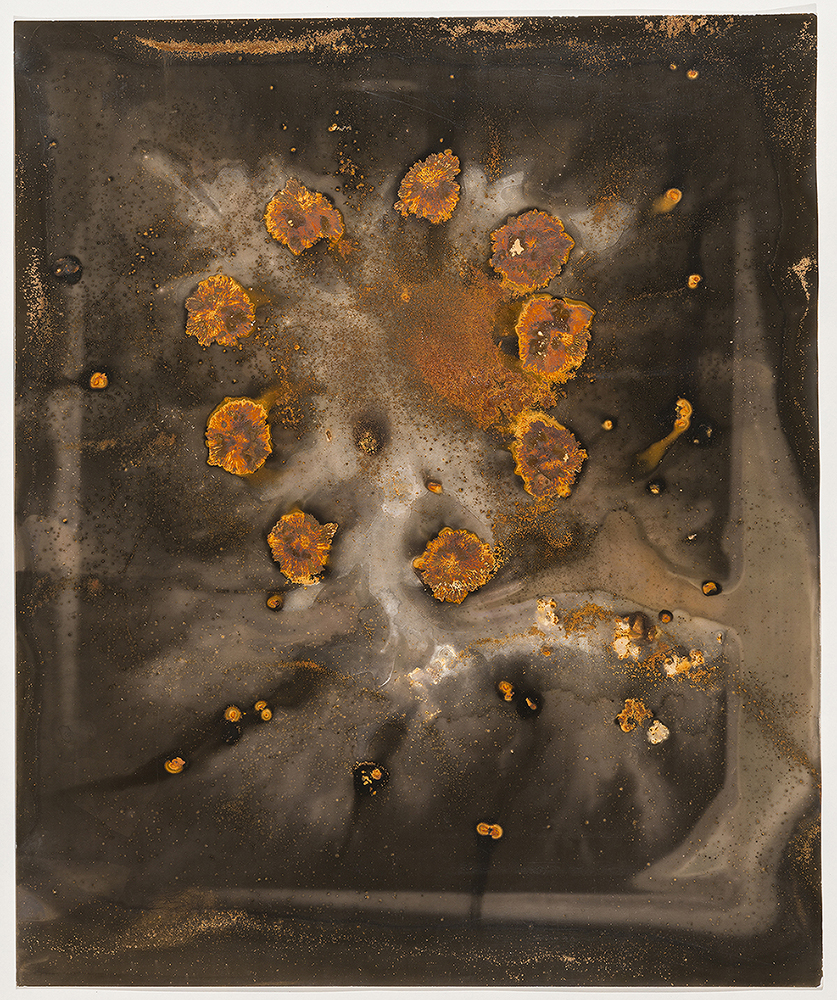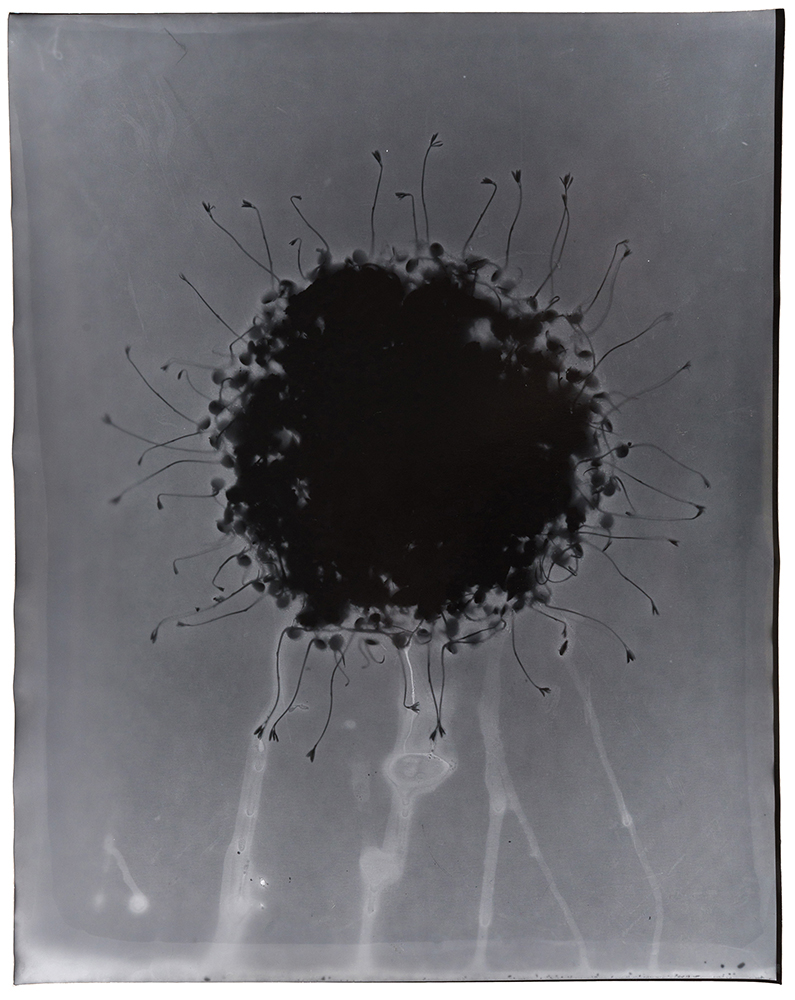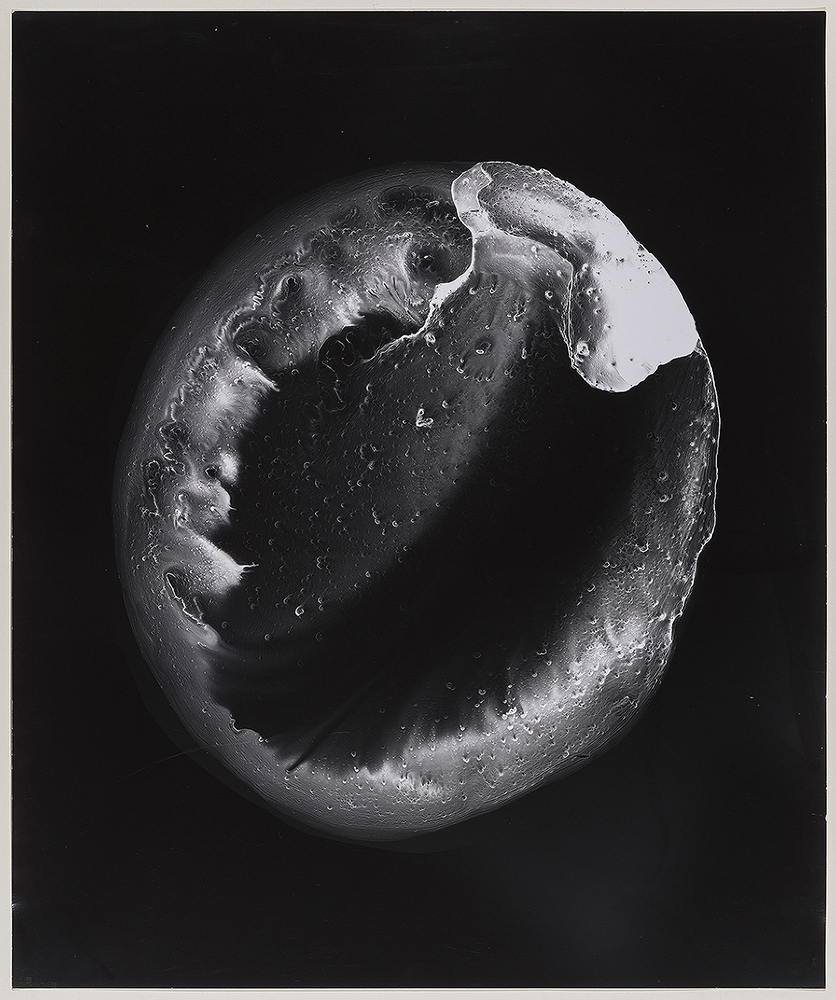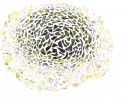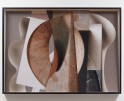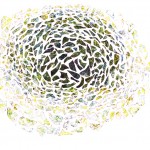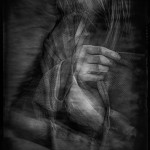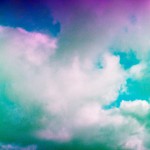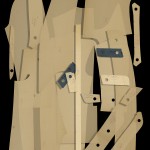Luminous Visions: Anne Arden McDonald: Atom, Planet
In Atom, Planet, Anne Arden McDonald creates an entire universe in her darkroom. These images traverse representational photography while highlighting the latent possibilities of silver gelatin paper. McDonald sees photography as a fledgling medium when compared to painting and sculpture. The potential of photographic materials are thoroughly tested and explored in her practice. Like alchemists of another time, McDonald employs the scientific method to make her unique pieces; each is observed, tested, and carefully measured. She then uses the information from her hypotheses to build on the information learned and makes a final image.
McDonald explores the boundaries of what photography can be when it is no longer in service to representation and the negative. These nebulous spheres and circles have been her obsession for over 15 years. She describes them as ever-present in the landscape and in our experience of nature. McDonald transverses our sense of scale with these otherworldly environments, invoking both the macro and the micro. With this foundational imagery, she explores the infinite potential of her compositions, tracing the shadows of planets and gazing into the structural elements of matter, all in her quiet Brooklyn darkroom.
You can see a work from this series here: https://www.nyartistsequity.org/all-events/among-friends
Follow Anne Arden Mcdonald on Instagram: @anneardenmcdonald
While most photography employs a lens, and either film or a digital sensor, this series explores ways of generating images on photographic paper without using a camera or negative. The source of inspiration for inventing processes that inform the resulting photograph is the dialogue that occurs between painters or sculptors, and their chosen medium. Another is the scientific method, where you observe phenomena, formulate a hypothesis, test it with experiments, use careful measurements, note variables, observe results, and use this information to build an image.
While still working with photo paper, light, and chemistry, I revisit some historic processes like Man Ray’s photogram, Pierre Cordier’s chemigram, and lumen printing, and also invent other ways of producing images without using a negative. These processes are utilizing optical situations, or chemical reactions, or a combination of the two. Applying glue as a resist and digging down to the photo paper surface with alternating photo chemicals causes an image to emerge on the paper in the form of a chemical painting. Some of these camera-less experiments include painting bleach onto blackened photo paper, building layered piles of glass and eggshells and moving around them with a flashlight to make an exposure, and growing a self-replicating garden of mold that feeds on silver gelatin paper. In one image, over 100 medicines, spices, and household cleaners were applied to photo paper and run through darkroom chemistry to test for colors and textures. The methods are an unorthodox collection of materials and techniques from the domestic and scientific realms, brought into the darkroom, often coaxing or scrubbing an image into the photographic paper. Some images are made in the dark and some in daylight, some processes are additive and others reductive, the result is a series of photographs.
The imagery emerges as circles and spheres, representing planets and atoms, visualizing the macrocosm and the microcosm of life as we know it. My obsession with these forms has lasted 15 years, they are so much of what I see and experience. When I stand in landscape, the horizon is a circle; when nature goes through four seasons and Spring comes again, that is a circle. Day begins again, circles are a constant experience, either spatially or temporally. For many years, I made self portraits with a camera, making narrative images. With this abstract work, I am exploring the deeper story, the older story, the story of all of us, the story of atoms and planets, both circles—it is also an expression of my search for a sense of wholeness.
Photography is a very young and exciting medium, and there is so much undiscovered terrain. In some ways, it stands at a precipice: digital photography is eroding the availability of some analog materials, and the study and use of silver gelatin papers. Photographers have primarily used photo paper in the service of negatives, but it has other interesting applications as an art material. I am working to develop these processes, and to pose interesting questions about what photography is, and what it can be.
What inspires you to explore analog materials, specifically silver gelatin paper?
I have a love of silver gelatin paper that goes back 40 years now, I have an appreciation for the different surfaces, for the thickness of the paper, the weave of the paper, the way it resists and then opens up to liquids, the layers of mechanically applied silver particles—For me, digital has never held any interest–
Do you have a favorite approach or tool?
No, I guess my favorite moment is when the image reveals itself, so often I don’t know what has happened until that moment–
When you are in the process of making your photograms what decisions do you make about what material or chemical you will use? Or how long they will interact with the paper?
For photograms I tend to look for materials that pass light in interesting ways–
You say there is a dialog between an artist and their chosen medium, can you discuss how this philosophy influences your work?
Painters talk to paint, and paint talks back to them — I have been inventing ways where the process informs the resulting image, and where I can have surprise encounters with light and chemistry–
Looking to the future what are you working on?
I’m still working with rust and mud, along with dropping silver out of silver gelatin paper in different patterns—Many of my processes evolve from other explorations, it’s like following a string or a path–
Anne Arden McDonald is a Brooklyn based visual artist who grew up in Atlanta Georgia. From age 15 to 30 she made self portraits by building installations in abandoned interiors and performing privately for her camera in these spaces, publishing a book of this work in 2004. More recently she has been using light and chemistry the way a painter or sculptor would to build images on photographic paper. Her work has been exhibited in contexts that range from self portrait, staged, ritual, plastic camera, antique process and experimental photography; to sculptural installations as large as a room and as small as a pocket watch.
McDonald’s work has been exhibited widely: in the past 30 years, she has had 44 solo exhibitions in 10 countries (about 230 total shows in 14 countries) and has been published in over 215 places in 20 countries, including in Aperture, European Photography, and Eyemazing Magazines. Her work is in the collections of the Brooklyn Museum, the Houston MFA, the Denver Art Museum, the Detroit Institute of Art, the Worchester Art Museum, and the Bibliothque Nationale in Paris. She has been a fellow at the Millay Colony, Saltonstall, the Sharpe Foundation, and Byrdcliffe colony from 2015-2017. She taught for 6 years at Parsons School of Design in New York, and has lectured about topics such as staged photography, self portraiture, Czech and Slovak photography, alternative photography, and her own work
Galina Kurlat (b. 1981, Russia) is a photographic artist living in Brooklyn, NY, she earned her BFA in Media Arts from Pratt Institute. Kurlat creates a visual relationship between herself and her subject by embracing the imperfections and possibilities of antiquated photographic processes. Kurlat’s work been shown in Korea, India, Scotland, France and the US. Recent exhibitions include “Anatomy of Loss”, Pictura Gallery in Bloomington IN, “Shadow Play”, Peter Halpert Fine Art in NYC, “Process”, Studio Bizio in Edinburgh, “Touch me Touch you”, Jinju International Photo Festival, South Korea, “Self-Processing- Instant Photography”, Ogden Museum of Southern Art, New Orleans, LA. Her work is collected throughout the US and abroad. Kurlat has been published in Oxford American, Analog Forever Magazine, Lenscratch, aPhotoEditor, Fraction Magazine, Houston Chronicle, Diffusion IX and Fraction of a Second, Radius Books along with numerous other periodicals and catalogs. She is the cofounder of Main Street Projects, an artist-run organization in Houston that has hosted over 150 local, national and international artists to date. MSP is an artists’ initiative which brings art into urban surroundings. During 2005-2011 Kurlat curated a number of multi-media and site specific exhibitions in alternate spaces throughout NYC.
Follow Galina Kurlat on Instagram: @galinakurlat
Posts on Lenscratch may not be reproduced without the permission of the Lenscratch staff and the photographer.
Recommended
-
The Female Gaze: Alysia Macaulay – Forms Uniquely Her OwnDecember 17th, 2025
-
Bill Armstrong: All A Blur: Photographs from the Infinity SeriesNovember 17th, 2025
-
Robert Rauschenberg at Gemini G.E.LOctober 18th, 2025
-
Erin Shirreff: Permanent DraftsAugust 24th, 2025
-
Shelagh Howard: The Secret KeepersJuly 7th, 2025

